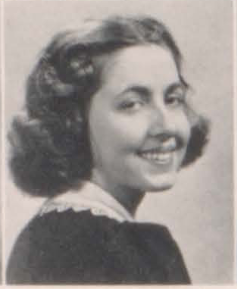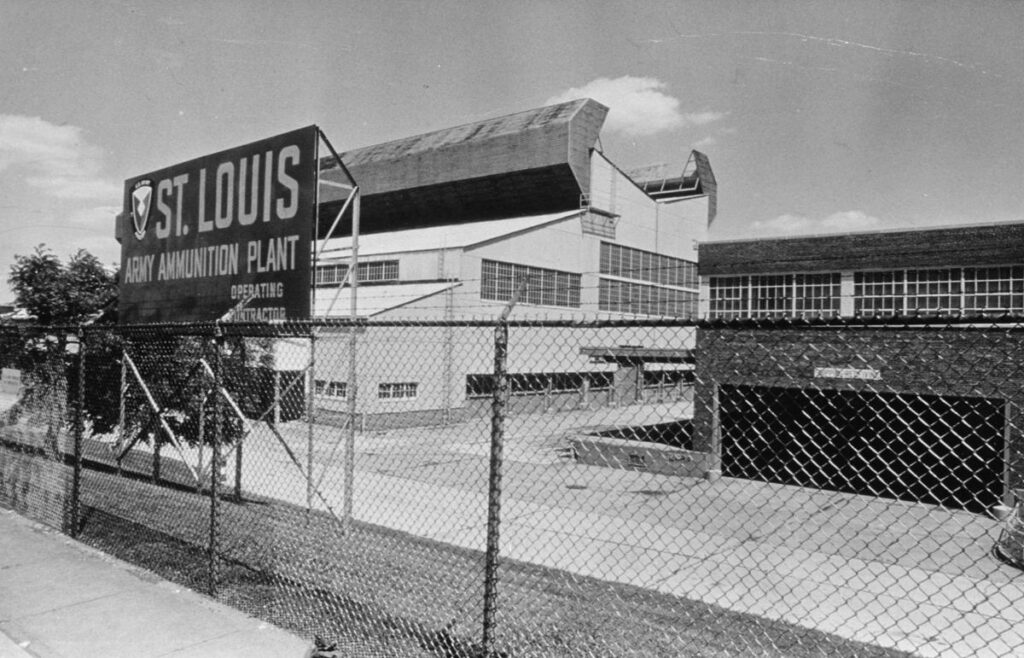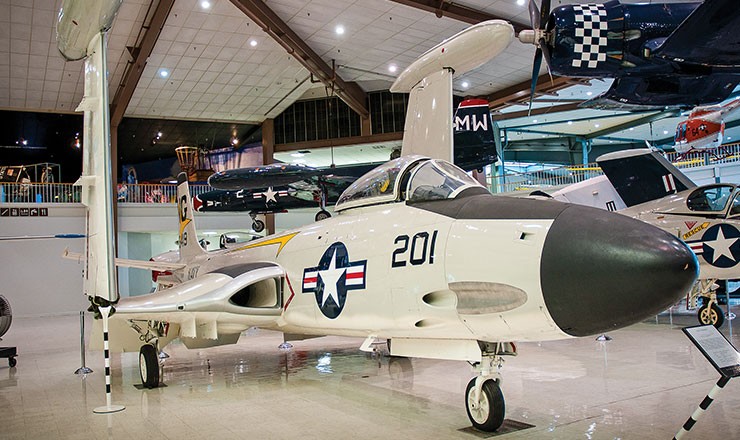Lieutenant Colonel Johanna Elizabeth Balla Baskin Butt

- Unit: 382nd General Hospital
- Date of Birth: May 12, 1921
- Entered the Military: March 26, 1944
- Date of Death: February 11, 2020
- Hometown: St. Louis, Missouri
- Place of Death: University City, Texas
- Award(s): French Legion of Honour Award, National Defense Medal, United Nations Service Medal, Korean Service Medal, Army Commendation Medal, Meritorious Service Medal, KAME Campaign Medal with Bronze Service Stars, World War II Victory Medal
- Cemetery: Section 1GH, Site 1062. Jefferson Barracks National Cemetery, St. Louis, Missouri
Mentored by Dr. Megan Burian
Marquette High School
2024/2025
Early Life
Johanna Elizabeth Balla was born on May 12, 1921, in Unterwath, Austria. She moved with her family to the United States when she was two. Her father, John Balla, arrived first, and later Johanna left Europe by ship with her mother, Rosa, and younger sister, Mary (Maria). They traveled on the S.S. Paris, which left port at Le Havre, France, on October 13, 1923. The family arrived in New York City on October 20, 1923. Johanna, her mother, and her six-month-old sister, Mary, went to St. Louis, Missouri, to rejoin her father.
By 1930, the family had welcomed a third daughter, Anna. John worked as a laborer at a baking company, and Rosa worked as a janitor in an office building.
Johanna Balla attended and graduated from Blewett High School in St. Louis, Missouri, in 1939. In her senior yearbook, her picture was accompanied by the quote, “A girl who stands out in a crowd; a girl whose character speaks aloud.”
Because of trouble with her health, she was advised to find a warmer climate. This led her to pursue nursing at Good Samaritan Hospital of Nursing in Phoenix, Arizona. She graduated from Good Samaritan in 1943.


Homefront
The St. Louis metropolitan area comprises the city and the county of St. Louis. The two regions have separate governments after the 1867 “Great Divorce.” This agreement, created initially to benefit wealthy city dwellers who did not want to support growth outside of the city, had long-term effects on schools, funding, and segregation in St. Louis. With separate seats of government, St. Louis City and St. Louis County have maintained distinct school systems, police departments, and tax systems.
The city of St. Louis reached its peak population in 1950. The population rose from 816,048 to 856,796 residents between 1940 and 1950. During the 1950s, St. Louis became one of the largest cities in America. The city ran out of room for more housing, which pushed growth into St. Louis County. As more of the population in St. Louis City began to move out to the county during the mid-twentieth century, funding to maintain city services also started to decrease, resulting in larger disparities in housing, schooling, and other services between those in the county and those in the city.
Korean War
St. Louis-based McDonnell Aircraft produced aircraft for the Korean War. McDonnell Aircraft made the F2H Banshee, which played a significant role as a fighter and reconnaissance craft during the war.
The St. Louis Armory Ammunition Plant’s projectile area was reactivated in May 1951 for the Korean War after being shut down following World War II. It stayed active for three more years. During the Korean War, it produced 40% of the country’s total 105-mm projectiles.


Military Experience
After studying nursing at the Good Samaritan Hospital School of Nursing, Johanna Balla joined the U.S. Army Air Corps and was sent to basic training at Lackland Air Force Base in Texas in 1943. After a run-in with the head nurse, she was transferred to the U.S. Army Nurse Corps instead.
World War II
Johanna Balla sought to defend her country many times throughout her career. In 1944, she was deployed to France and Germany with the 123rd Evacuation Unit, treating, among others, General Patton’s Third Army. Balla followed his army after the Battle of the Bulge. She once encountered General Patton in her operating room and promptly told him to leave. While her superiors did not like her response, Patton replied, “Lieutenant, I commend you for the work that you’re doing so well.” Balla later reminisced that she would get into trouble sometimes, saying, “I opened my mouth when I didn’t like something.”
First Marriage
With the end of World War II, Balla returned to the United States in January 1946 and married U.S. Army Air Corps pilot First Lieutenant Earl Baskin that year in a proxy marriage in Kansas while he was still overseas. Sadly, she was widowed less than 18 months later when the plane he was piloting crashed in Europe on January 28, 1947, in a storm.
Education and Service in Korea
After the death of her first husband, Baskin returned to St. Louis to live with her parents and earned her nursing diploma at Washington University, St. Louis, where she worked for several years. In 1951, she was recalled to active duty for the Korean War after receiving what she described as a “nice letter” from President Harry S. Truman.
At the 382nd General Hospital in Kanoaka, Japan, Baskin often worked 18-hour shifts as a surgical supervisor, where she would care for airlifted troops from Korea. The hospital where she worked was one of the primary evacuation hospitals that took soldiers after major battles. She wanted to go to Korea, but her supervisor consistently denied her request, saying she was required at the hospital.
Army nurses’ jobs often went beyond what civilian nurses were expected to do. This period saw a significant improvement in military medical evacuation, making evacuation hospitals even more crucial. Baskin remembered her time at the hospital as being so busy that she could never take leave while stationed there.
Recruiting and Educating
After she left Korea, she spent many years as an Army nurse recruiter before training operating room nurses at Fort Sam Houston in Texas. Johanna attended classes to complete a master’s degree in nursing. After earning her degree, she became an Educational Assistant Chief Nurse at Fort Bragg in North Carolina. At Fort Bragg, she also married Army Lieutenant Colonel Ernest Butt in 1963. She achieved the rank of lieutenant colonel in 1967. After a military career of just over 20 years, Lieutenant Colonel Baskin Butt retired at Fort Leonard Wood, Missouri.



Veteran Experience
Butt officially retired on February 28, 1970, and was discharged from her final post at Fort Leonard Wood, Missouri. She had requested to be stationed there to be close to her mother in St. Louis, Missouri, after one of her younger sisters passed away.
Johanna and Ernest Butt moved to Tucson, Arizona and brought Johanna’s mother along so that she could care for her. Following her mother’s death, Johanna was a caretaker for her husband, Ernest, until his death.
Legacy
In the years after her mother’s and second husband’s passing, Johanna travelled the country and the world. She was awarded the French Legion of Honour Award, one of the highest decorations given by France, for her service during World War II. She also received the National Defense Medal, United Nations Service Medal, Korean Service Medal, Army Commendation Medal, Meritorious Service Medal, KAME Campaign Medal with Bronze Service Stars, and the World War II Victory Medal.
In her later years, she recorded an oral history, detailing her life in the military. It is available through the Library of Congress. She was also featured in a photography project that sought to capture the memories of World War II veterans.
Commemoration
Johanna Baskin Butt passed away February 11, 2020, at the age of 99 years old. She is buried at Jefferson Barracks National Cemetery in her family’s adopted hometown of St. Louis, Missouri.
Bibliography
Primary Sources
“Announcement Party Given at Crawford Ballroom Thursday.” Big Spring Daily Herald [Big Spring, TX], November 17, 1944. Newspapers.com (12617405).
“Army Nurse Counselor Visits Eugene for Week.” The Eugene Guard [Eugene, OR], October 10, 1960. Newspapers.com (154020534).
“At Convention.” The Bulletin [Bend, OR], September 30, 1959. Newspapers.com (92245770).
Blewett High School Yearbook. St. Louis: St. Louis Public Schools, 1939.
Collett, Maj. Adam. “An Honor Due: WWII vets set to receive medals from French.” U.S. Army. March 27, 2013. https://www.army.mil/article/95072/an_honor_duewwii_vets_set_to_receive_medals_from_french.
Evans, D. Clarke. Johanna Butt Nurse in Europe. Photograph. September 8, 2017. D. Clarke Evans, Photographer. Accessed November 26, 2024. https://www.dclarkeevans.com/portfolio/butt-johanna-nurse-in-europe/.
F2H-2 Banshees in St. Louis Factory with Wings Folded. Photograph. c.1947-1953. Boeing Corporation. https://secure.boeingimages.com/archive/F2H-2-Banshees-in-St–Louis-Factory-with-Wings-Folded-2F3XC50Z29.html.
“5 Dead, Missing in Three Plane Mishaps.” Lubbock Morning Avalanche [Lubbock, TX], January 31, 1948. Newspapers.com (6048709).
“Funeral Notices: Edwards, Mary R.” St. Louis Post-Dispatch [St. Louis, MO], April 2, 2000. E6.
Johanna Baskin Butt, DD-214, Department of the Army. National Cemetery Administration, U.S. Department of Veterans Affairs.
Johanna Baskin Butt. Oral History. Veterans History Project, Library of Congress (AFC/2001/001/41189). https://www.loc.gov/item/afc2001001.41189/.
Johanna Butt. Friends of the National WWII Memorial. Video interview. 2021. Accessed November 26, 2024. https://www.wwiimemorialfriends.org/voices/johanna-butt.
“A Marriage by Proxy.” The Emporia Gazette [Emporia, KS], September 18, 1946. Newspapers.com (12601988).
Missouri. St. Louis. 1930 U.S. Census. Digital images. http://ancestry.com.
Missouri. St. Louis. 1940 U.S. Census. Digital images. http://ancestry.com.
Missouri. St. Louis. 1950 U.S. Census. Digital images. http://ancestry.com.
“Nurse Johanna Baskin Teachers at New School.” Neighborhood News [St. Louis, MO], January 5, 1956. Newspapers.com (699603990).
“Wreckage of Plane Sighted in France.” The Talladega Daily Home [Talladega, AL], January 30, 1948. Newspapers.com (539704302).
Secondary Sources
“A Brief History of St. Louis.” St. Louis, Missouri Government. Accessed November 15, 2024. https://www.stlouis-mo.gov/visit-play/stlouis-history.cfm.
F2H-4 Banshee. Photograph. National Naval Aviation Museum. https://www.history.navy.mil/content/history/museums/nnam/explore/collections/aircraft/f/f2h-4-banshee.html.
“Johanna Baskin Butt.” National Cemetery Administration National Gravesite Locator. Accessed March 4. 2025. https://www.cem.va.gov/nationwide-gravesite-locator/.
“Johanna Baskin Butt.” Veterans Legacy Memorial, U.S. Department of Veterans Affairs. Accessed March 4. 2025. https://www.vlm.cem.va.gov/JOHANNABASKINBUTT/9a8383.
Johnson, Walter. The Broken Heart of America. Basic Book, 2020.
“LTC (Ret) Johanna Baskin Butt.” Find a Grave. Updated August 31, 2020. Accessed March 4. 2025. https://www.findagrave.com/memorial/215071515/johanna-baskin-butt.
MacDonald and Mack Partnership. Historic Properties Report: St. Louis Army Ammunition Plant. 1984.
O’Neil, Tim. “A Look Back: How 35,000 workers kept the ammo flowing during World War II.” The St. Louis Post-Dispatch [St. Louis, MO], June 27, 2022. https://www.stltoday.com/news/archives/article_3485624f-ef86-51ee-b100-858060b47c9f.html.
Wanko, Andrew. “The Great Divorce.” Missouri Historical Society. Accessed November 15, 2024. https://mohistory.org/blog/the-great-divorce/.
This profile was funded by a grant from the United States Department of Veterans Affairs. The opinions, findings, and conclusions stated herein are those of the author and do not necessarily reflect those of the United States Department of Veterans Affairs.

